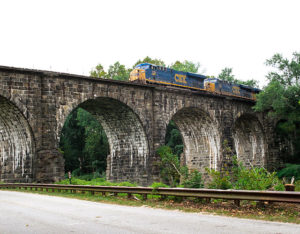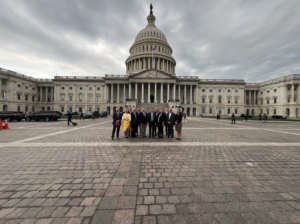Deal reached on Colton Crossing side projects
Written by jroodAn agreement is near regarding improvements around a long-sought railroad overpass in Colton, Calif., between railroad and local officials, as the overall project's fate heads to a state commission, The Press-Enterprise reports.
The Colton Crossing grade
separation has been a source of debate between state, federal and local
officials. Though the project ranks low on a list of local priorities, it has
consistently received favor when it comes to securing government grants, including
a recent $43-million award of federal stimulus funds.
The project removes the
place where BNSF and Union Pacific tracks cross, which leads to delays in freight
trains moving in and out of Southern California. Companies and state officials
have argued the crossing causes air pollution and leads to delays for
motorists, but local officials have said they would prefer to use scarce state
and federal funds on other projects.
To minimize opposition,
the railroads began negotiating with local officials on other improvements
around the crossing.
"These are
improvements to address the city of Colton’s concern," said Garry Cohoe,
director of freeway construction for San Bernardino Associated Governments.
Under the terms of the
Colton Crossing deal, SANBAG will spend up to $35.1 million on a handful of
projects associated with the project. BNSF and Union Pacific will use the state
and federal money — as well as their own — to raise the Union Pacific tracks.
"SANBAG is not
contributing anything to the Colton Crossing," Cohoe said.
The transportation
agency, meanwhile, will pay for most of a planned overpass along Laurel Street,
and pay most of the cost of creating a "quiet zone" where trains can
proceed without blowing their horns, once new traffic and pedestrian gates are
installed.
Also important is an
agreement to reroute trains so SANBAG will not have to replace a railroad
bridge spanning Interstate 215 that will need to be widened, Cohoe said. That
could save about $10 million as officials prepare to widen the freeway to add a
carpool lane in each direction, he estimated.
The railroads will also
review and comment on the I-215 widen and its impacts on them within a month.
"That is very
important to us because railroads can sometimes drag on a little bit,"
Cohoe said.
In return, local agencies
are less likely to oppose the Colton Crossing project when the railroads turn
to the state for funding.
A larger agreement
between the railroads and state officials on the railroad overpass is necessary
to receive $97 million in state funds included in the Prop. 1B transportation
bond voters approved in 2006, must be reviewed by the California Transportation
Commission. The commission meets March 25 in Los Angeles.
"I think what they
won’t want to see is local opposition …," Cohoe said. "It would be
nice for all the stakeholders including the city to be on the same page."





